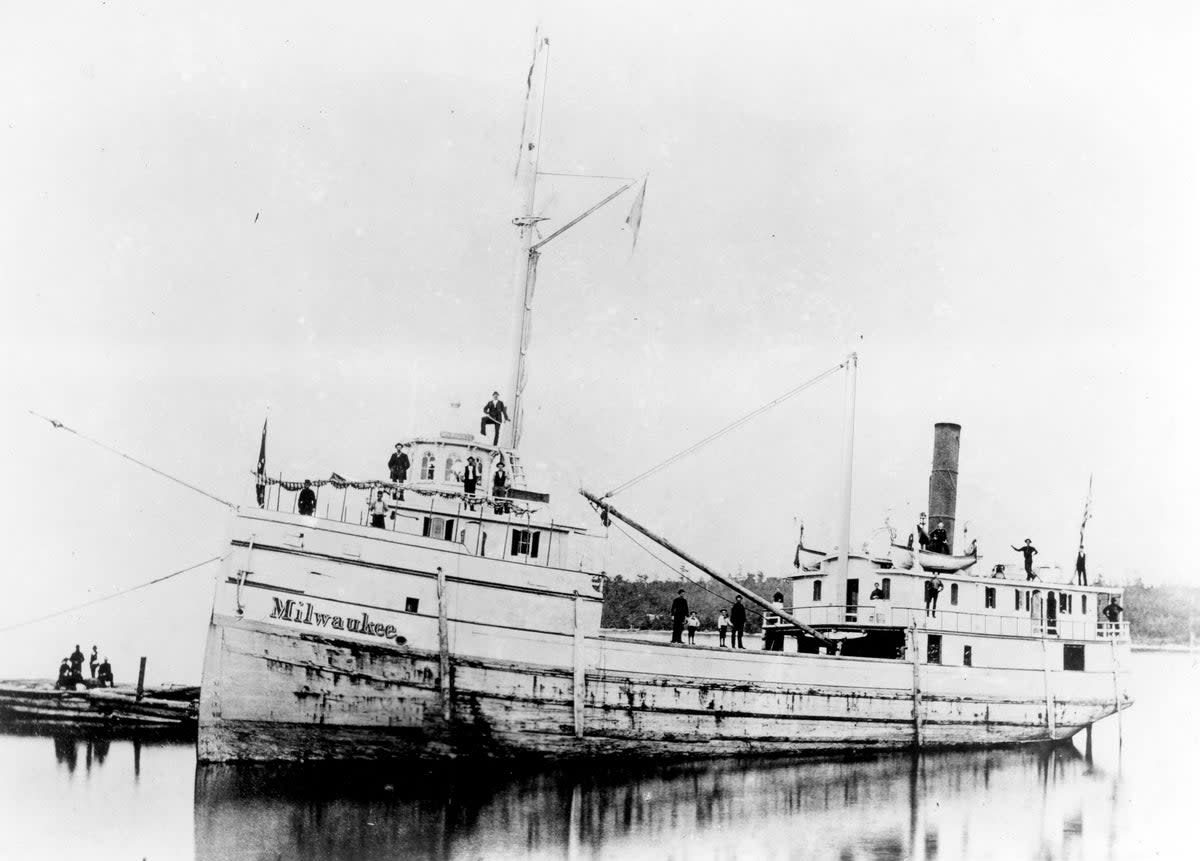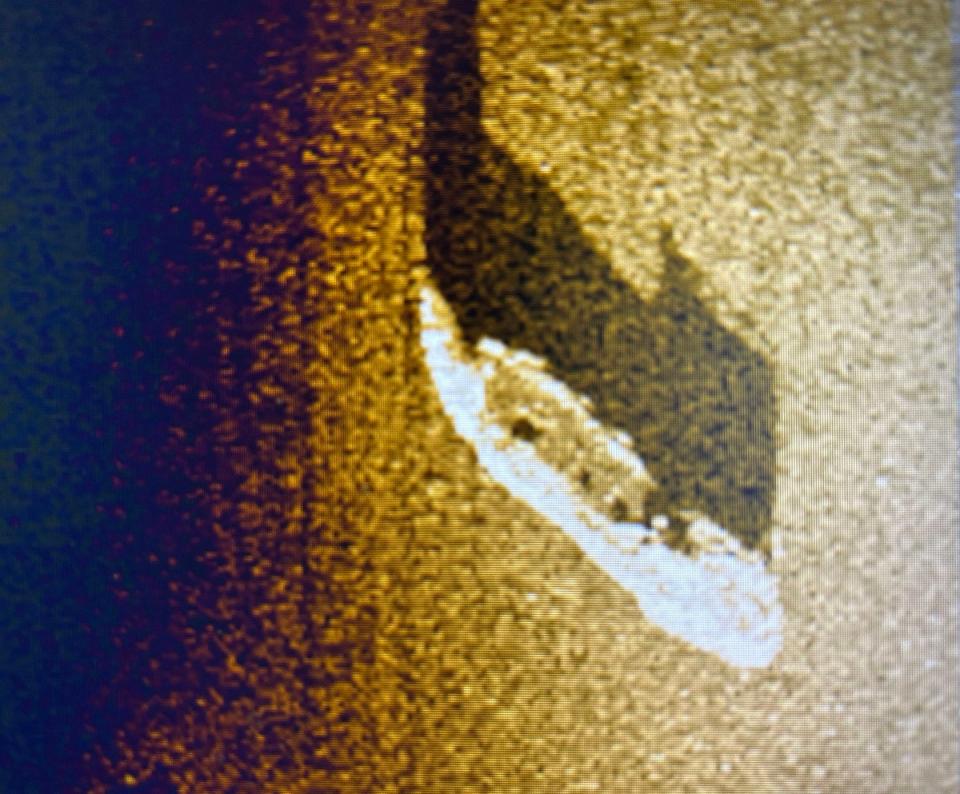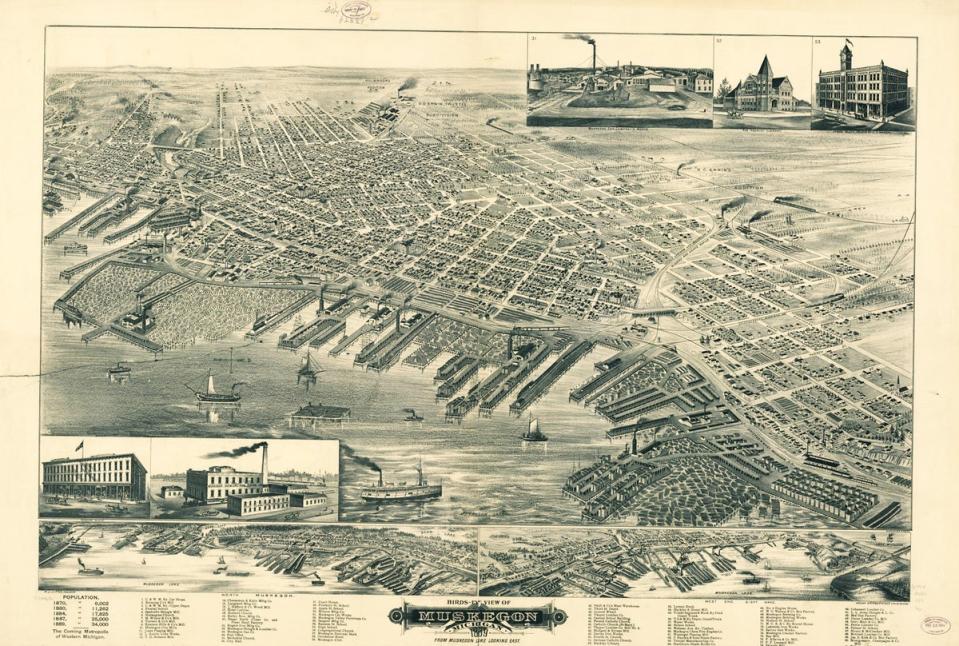Shipwreck found at bottom of Lake Michigan almost 140 years later

Local explorers have found the remains of a steamship that lay at the bed of Lake Michigan for around 137 years, using clues in newspaper clippings to discover the wreck.
Explorers from the Michigan Shipwreck Research Association (MSRA) made the remarkable discovery of the Milwaukee, a steamship that disappeared into the depths of the lake in 1886 after it collided with another ship around 40 miles from Holland, Michigan, where it now lies in 360 feet of water.
The 135-feet-long ship was first commissioned in 1868 by one of the earliest steamship operators, The Northern Transportation Company of Ohio, to join a growing fleet to carry passengers and goods between New York and Chicago.
As the railroads continued to expand, the ship was eventually repurposed into a cargo carrier on Lake Michigan, and was then sold in 1883 to haul lumber to Chicago.
The MSRA made the discovery of the vesselin June of last year using side-scan sonar, and then spent the summer working to film the shipwreck, trying to confirm its exact identity, the association announced in a Facebook post.
They also used a remote operated vehicle (ROV) to document the wreck, assembled especially for the project by the team’s engineer.
Before this, however, in order to discover the exact whereabouts of the ship, the explorers had to go back to basics, looking into old newspaper accounts rather than using modern-day technology to crack the case of where the ship disappeared to.
“It was newspaper accounts of the sinking that provided the clues we needed to locate the shipwreck,” said Valerie van Heest, who with her husband Jack van Heest, coordinated the search effort together.
The accounts painted a picture of the day that led to the ship’s demise.
In July 1886, the Milwaukee was smashed into by another boat, the Hickox, causing the steamship to sink, after a perfect storm of unfortunate incidents on the water.
Both ships were sailing such an exact course that around midnight they ended up bearing straight for each other.
Under navigation rules, both captains were supposed to slow down, steer right and sound their whistles to indicate their course change.
“But the old superstition that bad things happen in threes would haunt the captains of both ships that night,” the MSRA wrote in their post.

Neither captain slowed down because visibility was fine, but “suddenly a thick fog rolled in, rendering them both blind,” the MSRA said.
The captain of the Hickox then quickly made a turn and tried to blast his steam whistle, but when he went to do so, the pull chain broke.
Unable to see or hear where the other ship was going, Captain Armstrong of the Milwaukee froze, and when the fog cleared, the Hickox was “upon” the Milwaukee.
In a desperate last attempt to evade collision, Armstrong tried to turn, but at that point, it was too late, and the Hickox ploughed into the side of the Milwaukee.
Water started to gush into the ship, and a distress signal was blown.
Fortunately, all the crew managed to climb safely on the Hickox, but the Milwaukee itself was still doomed, as after two hours, the ship had plunged to the bottom of the lake.
The Hickox and another nearby vessel, the City of New York, had even teamed up together by sailing so close to the ship that they managed to sandwich the vessel to keep it afloat, but it was ultimately to no avail.

As for the two captains involved in the crash on the lake, both had their licences taken away from them for a time after they both failed to slow down.
Studying all these stories tucked away in old news accounts meant it only took the MSRA two days to search for the Milwaukee before it was found with the side scan sonar, they said.
Weeks after, the team were able to lay their eyes on the shipwreck for the first time using the ROV.
“Visibility was excellent,” says Mr van Heest, who piloted the ROV. “We saw the forward mast still standing as the ROV headed down to the bottom.”
The shipwreck rests “remarkably intact” upright on the bottom of the lake, still facing northeast just as it was heading that night, unfortunately never making it to its destination.
While the sinking of the Milwaukee meant career damage for the two captains over a century ago, the discovery of the wreckage is a proud achievement for the present-day shipwreck researchers as it marks the 19th wreck the association has discovered off the shores of West Michigan.
The team have now been able to document details of the ship never recorded before, lost in history at the bottom of the lake.


